(Antwerp circa 1636 – circa 1699 Brussels) Fruit on a silver dish with rabbits and a monkey by a broken capital with an ornamental urn and a black page boy feeding a parrot, oil on canvas, 122.5 x 175.5 cm, framed Provenance: sale, Christie’s, London, 15 July 1949, lot 38 (as F. Snijders); with Mallet & Son, London, 1949; Collection of William Randolph Hearst (1863–1951), San Francisco; sale, Sotheby’s Parke-Bernet, Los Angeles, 8 November 1977, lot 132 (as Flemish School, 17th Century); sale, Sotheby’s, London, 12 December 1990, lot 70; Trian Group, New York, since 1991 Exhibited: Los Angeles, County Museum of Art, on loan, no. 49.33.2 The present picture is listed in the RKD database under no. 16007. A comparable painting by David de Coninck with slightly different measurements was offered at Dorotheum, Vienna, 9 June 2020, lot 70. The present canvas, with its embarrassment of riches, from the gilded salver spilling out fruit, fallen Corinthian capital, monkey, parrot and African page, is a vibrant example of the High-Baroque style of still life painting and the skill of its leading practicioner, David de Coninck The Italianate garden, with gentle light articulating the figures and ornamental busts set atop and beside the leading lines of well-manicured hedges completes the sense of Arcadian abundance. De Coninck spent almost three decades in Rome from the early 1670s, shaped there by the artistic milieu he worked alongside. His colleagues included Giacomo Galli Lo Spadino and Michelangelo di Campidoglio, with whom he shared composition inventions and motifs. The brilliance of the elements in the present composition is not dulled by their re-use in other paintings by de Coninck. The parrot, for example, appears in an altered pose in a work by the artist in the Kunstmusueum Basel. De Coninck’s formation, however, was typically Flemish. The pictorial exuberance and vigour of the present work, along with the quotations after the antique, reveals the long-standing influence of Peter Paul Rubens and his the compositions that followed his seminal Garden of Love. Indeed, the adeptness with which the monkeys and rabbits are executed in the present work, could be attributed to de Coninck’s supposed training in the workshop of Jan Fyt himself a pupil of Rubens’s long-standing collaborator Frans Snyders
(Antwerp circa 1636 – circa 1699 Brussels) Fruit on a silver dish with rabbits and a monkey by a broken capital with an ornamental urn and a black page boy feeding a parrot, oil on canvas, 122.5 x 175.5 cm, framed Provenance: sale, Christie’s, London, 15 July 1949, lot 38 (as F. Snijders); with Mallet & Son, London, 1949; Collection of William Randolph Hearst (1863–1951), San Francisco; sale, Sotheby’s Parke-Bernet, Los Angeles, 8 November 1977, lot 132 (as Flemish School, 17th Century); sale, Sotheby’s, London, 12 December 1990, lot 70; Trian Group, New York, since 1991 Exhibited: Los Angeles, County Museum of Art, on loan, no. 49.33.2 The present picture is listed in the RKD database under no. 16007. A comparable painting by David de Coninck with slightly different measurements was offered at Dorotheum, Vienna, 9 June 2020, lot 70. The present canvas, with its embarrassment of riches, from the gilded salver spilling out fruit, fallen Corinthian capital, monkey, parrot and African page, is a vibrant example of the High-Baroque style of still life painting and the skill of its leading practicioner, David de Coninck The Italianate garden, with gentle light articulating the figures and ornamental busts set atop and beside the leading lines of well-manicured hedges completes the sense of Arcadian abundance. De Coninck spent almost three decades in Rome from the early 1670s, shaped there by the artistic milieu he worked alongside. His colleagues included Giacomo Galli Lo Spadino and Michelangelo di Campidoglio, with whom he shared composition inventions and motifs. The brilliance of the elements in the present composition is not dulled by their re-use in other paintings by de Coninck. The parrot, for example, appears in an altered pose in a work by the artist in the Kunstmusueum Basel. De Coninck’s formation, however, was typically Flemish. The pictorial exuberance and vigour of the present work, along with the quotations after the antique, reveals the long-standing influence of Peter Paul Rubens and his the compositions that followed his seminal Garden of Love. Indeed, the adeptness with which the monkeys and rabbits are executed in the present work, could be attributed to de Coninck’s supposed training in the workshop of Jan Fyt himself a pupil of Rubens’s long-standing collaborator Frans Snyders



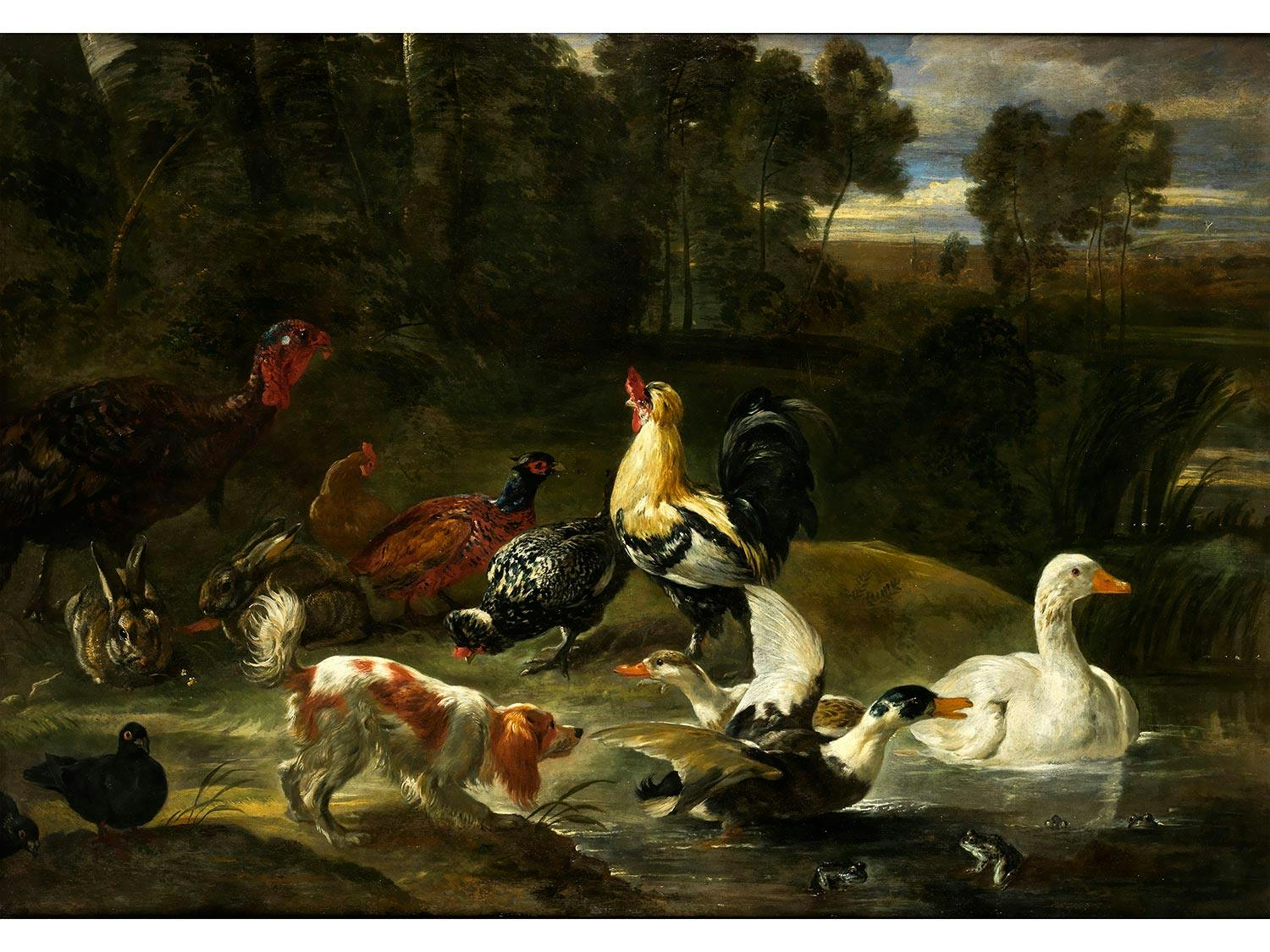
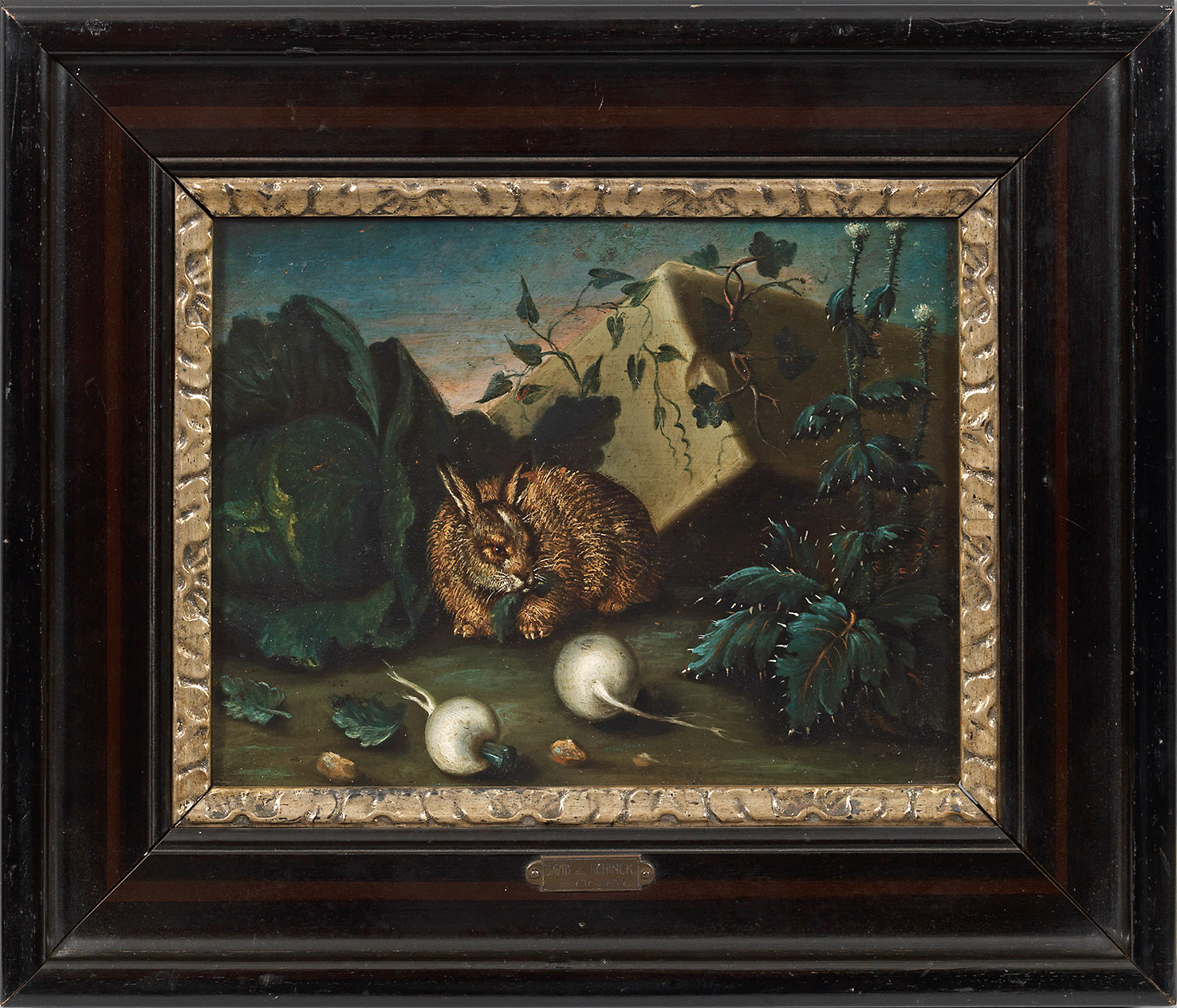
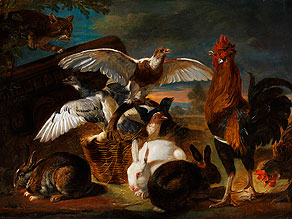
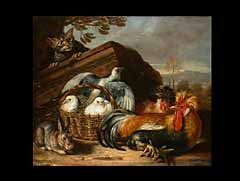
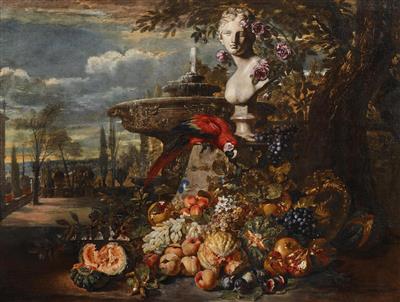

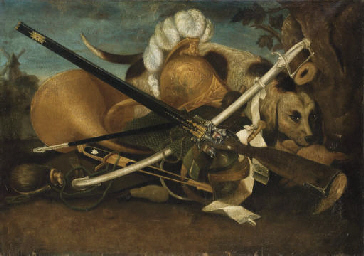
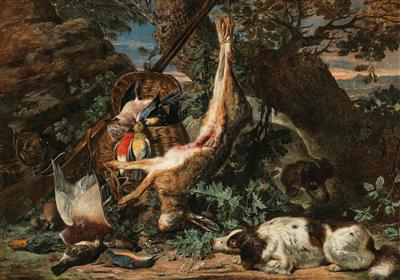
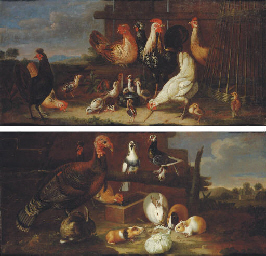
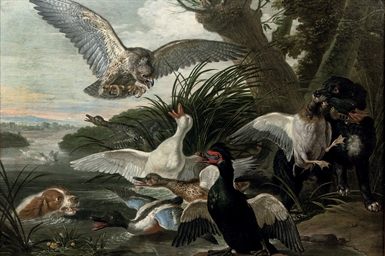

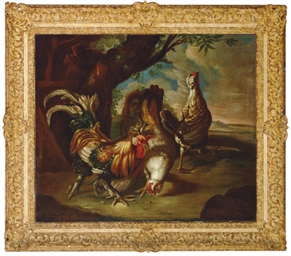
Testen Sie LotSearch und seine Premium-Features 7 Tage - ohne Kosten!
Lassen Sie sich automatisch über neue Objekte in kommenden Auktionen benachrichtigen.
Suchauftrag anlegen